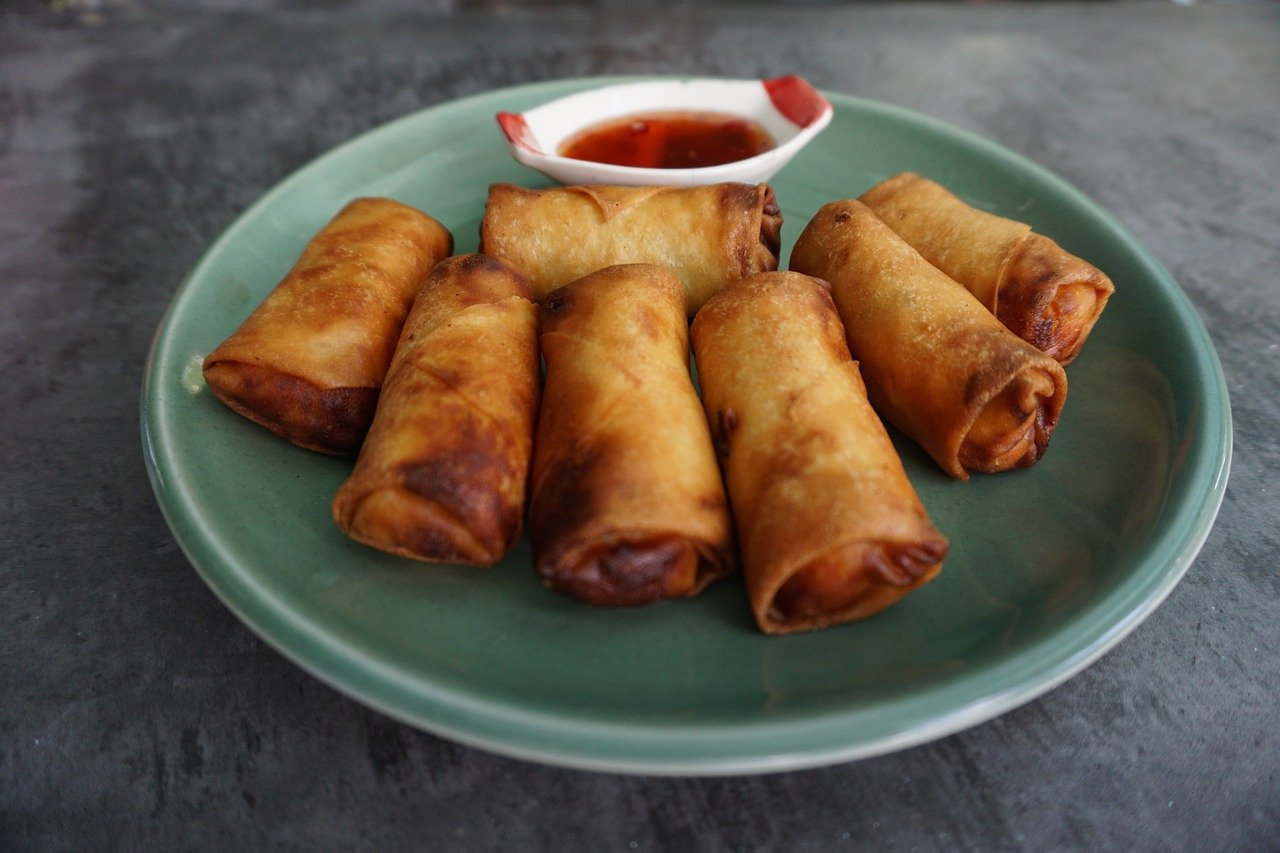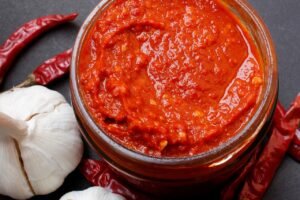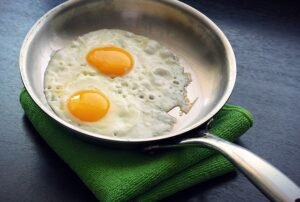This post may include affiliate links which means I may receive a commission from purchases made through links. I will only recommend products I have personally used. Learn more on my private policy page.

Egg roll wrappers, the thin dough sheets enveloping savory fillings that create our beloved egg rolls, are far more than a mere shell.
Their history, selection, types, uses, and even the process of making them at home are all fascinating facets that deserve to be explored.
So, let’s take a deep dive into the world of egg roll wrappers, unraveling the intriguing details behind this kitchen staple.
The History and Origin of Egg Roll Wrappers
Tracing the origin of egg roll wrappers takes us back to the flourishing period of the Tang Dynasty (618–907) in China.
These wrappers were first introduced as an integral element in the creation of spring rolls, a delicacy typically enjoyed during the Spring Festival, symbolizing the onset of the new season.
The traditional method of making these wrappers involved a simple dough of flour and water.
This dough would then be skillfully rolled out into ultra-thin sheets and subsequently pan-fried.
With time, the basic concept of egg roll wrappers traversed across borders, with various Asian countries adding their unique spin to it.
This cross-cultural culinary exchange is what has led to the range of egg roll wrappers we see in today’s global cuisine.
Vietnamese, Thai, and Korean culinary traditions, to name a few, embraced this staple and reinvented it to suit their gastronomic preferences.
The egg roll wrappers we know and love today are the result of centuries of adaptation and culinary innovation across different cultures.
The Art of Selecting Egg Roll Wrappers
Choosing the right egg roll wrappers can dramatically impact the taste and texture of your egg rolls.
The ideal wrapper should be thin, flexible, and possess a slight elasticity to prevent them from tearing during the rolling and cooking process.
Ingredients
One key aspect to look out for when selecting egg roll wrappers is the ingredient list on the package.
Superior quality wrappers usually include a few basic ingredients, such as
- wheat flour,
- eggs,
- water, and
- salt.
Any addition of unnecessary chemicals or preservatives should be a red flag.
Be cautious of wrappers that include a lengthy list of ingredients, especially those that are difficult to pronounce.
Such ingredients may point towards the addition of preservatives or artificial flavors which could affect the taste and overall quality of your egg rolls.
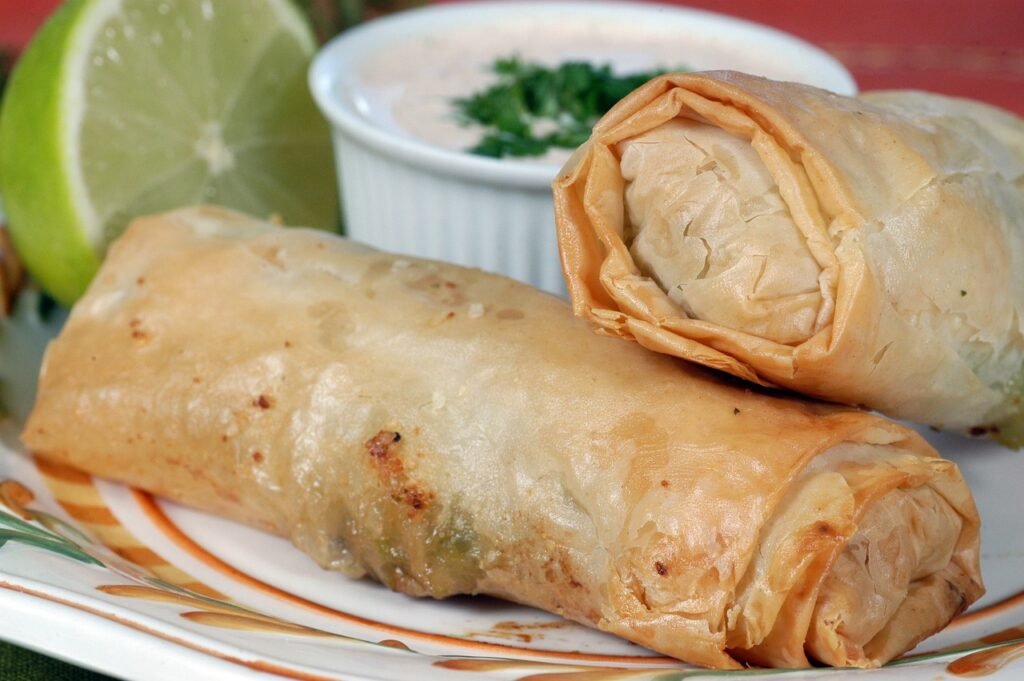
Freshness
In addition, it’s important to check the freshness of the wrappers.
They should be moist and pliable, not dry or brittle.
Some prefer to feel the package to ensure the wrappers inside are not stuck together, which can be a common problem with lesser-quality brands.
Remember, the right wrapper is not only pivotal for achieving the perfect egg roll, but also can make the process of rolling and cooking much easier.
With a quality egg roll wrapper, you’ll be on your way to creating Asian delicious and authentic cuisine.
Understanding the Different Types of Egg Roll Wrappers
Egg roll wrappers come in a variety of styles, each offering unique characteristics that contribute to the texture and taste of the final dish.
Chinese
Traditional Chinese egg roll wrappers, for instance, are typically thicker and robust, imparting a hearty crunch to the finished egg roll.
Vietnamese
On the other hand, Vietnamese rice paper wrappers are characterized by their thinness, delicacy, and translucent appearance.
These wrappers result in a lighter, crispier texture when fried.
Korean
The Korean yaki mandu wrappers are a bit thicker and yield a chewier consistency, making them perfect for dishes that require a more substantial, doughy wrap.
Filipino
Then, there are Filipino lumpia wrappers, which are extremely thin and render a crackly, crisp texture when deep-fried, giving lumpia its signature crunch.
It’s crucial to note that the choice of wrapper largely depends on the dish you’re preparing.
Every cuisine has its own traditional wrappers that contribute to the authentic taste and feel of the dish.
Understanding these variations will not only enrich your knowledge of Asian cuisines but also enhance your culinary prowess in re-creating these traditional dishes with accuracy.
By recognizing and appreciating the distinctiveness of each type of egg roll wrapper, you open up a world of flavors, textures, and cooking experiences, bringing you closer to mastering the art of Asian cuisine.
How to Use Egg Roll Wrappers in Dishes
The use of egg roll wrappers extends far beyond the realm of the traditional egg roll.
These versatile sheets of dough offer countless opportunities to add a unique twist to a myriad of dishes.
Narrow Strips
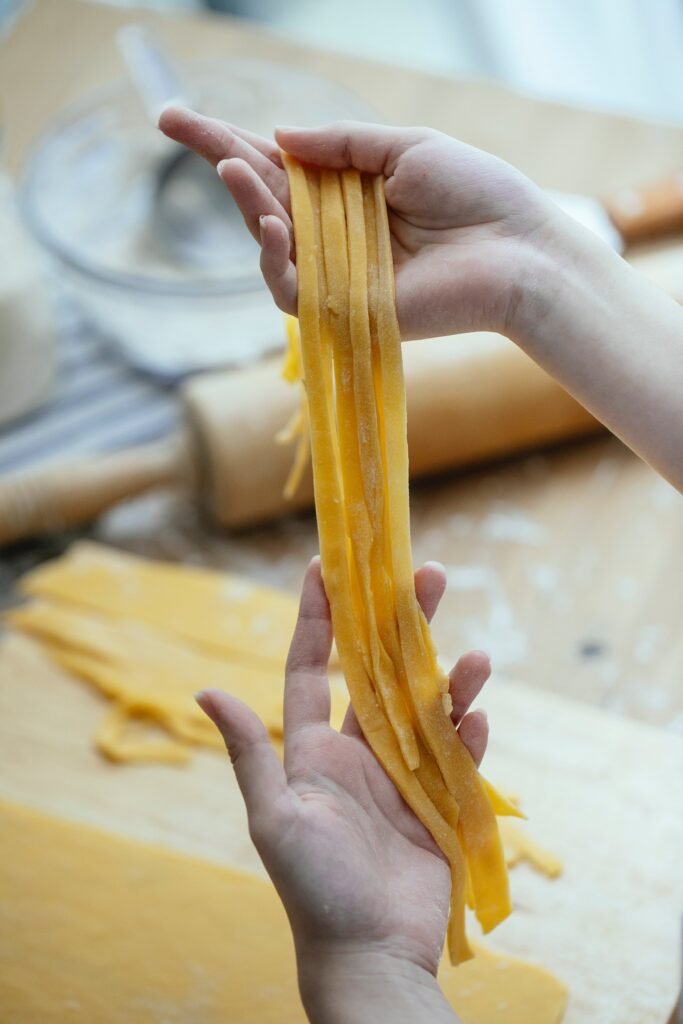
For instance, consider slicing them into narrow strips and frying them until crispy.
These crunchy pieces can serve as an excellent topping for salads, bringing an additional layer of texture to your greens.
Deserts
Another delightful use of egg roll wrappers is in the domain of desserts.
Fill them with a combination of ripe bananas and Nutella, seal them properly, and then deep-fry until golden brown.
After they cool, sprinkle some powdered sugar on top for a sweet, indulgent treat that is sure to please.
Edible Cups
The ability of egg roll wrappers to maintain their shape when cooked makes them an ideal candidate for making edible cups.
All you need to do is gently press a wrapper into each slot of a muffin tin and bake until crispy.
These charming little cups can serve as a unique way to present bite-sized appetizers or mini desserts at your next gathering.
Creativity
In the end, the uses of egg roll wrappers are limited only by your creativity.
Whether you’re enhancing your salads, concocting sweet treats, or crafting edible serving dishes, egg roll wrappers can be a fun and delicious component to include in your culinary adventures.
How to Make Homemade Egg Roll Wrappers
Embarking on the journey of creating homemade egg roll wrappers can be both fun and gratifying.
Starting with just a few staple ingredients found in most kitchens, you’ll be on your way to producing fresh and flavorful wrappers that can take your dishes to a whole new level.
Ingredients
First, let’s discuss the necessary ingredients.
All you’ll need is
- all-purpose flour,
- eggs,
- water,
and a dash of salt.
It’s as simple as that. These basic ingredients, when combined, form the basis for your egg roll wrapper dough.
The Process
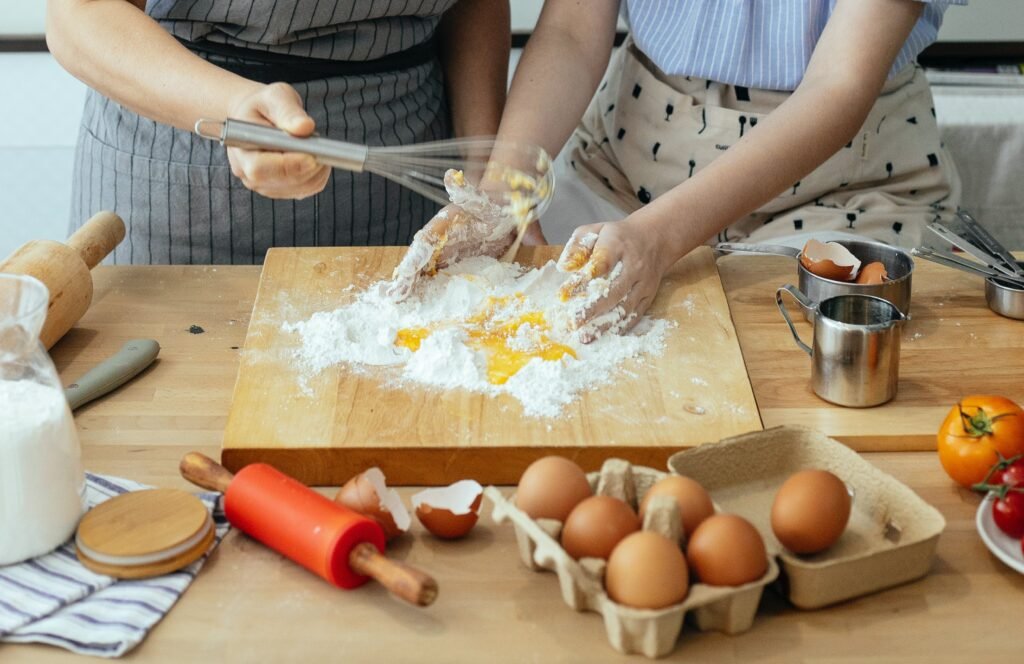
- The process begins by combining the flour and salt, followed by creating a well in the center.
- Into this well, crack the eggs and add the water.
- Gradually mix these wet ingredients into the flour, kneading until you achieve a smooth, elastic dough.
- Allow this dough to rest for a while, which will make the rolling process easier and also improve the texture of your wrappers.
- After the dough has rested, the next step is to roll it out. This step requires some skill, as the dough needs to be rolled as thin as possible without tearing.
- To do this, divide the dough into manageable portions, and then using a rolling pin, gently roll each piece out into a thin sheet.
- Take your time during this step, as the thinness of the dough is crucial in achieving the desired texture in your finished egg rolls.
- Once your dough is rolled out thinly, it’s time to shape your wrappers.
- The easiest way to do this is by using a square or round cookie cutter, depending on your preference.
- Simply press the cutter into your rolled dough, repeating until all your dough is transformed into neat squares or circles.
Voila! You’ve now made your very own homemade egg roll wrappers.
Using homemade wrappers not only gives your dishes a fresh, distinctive taste but also allows you to control the thickness according to your preference.
This aspect of personalization can elevate your culinary creations, making them all the more special.
So, why not give homemade egg roll wrappers a try?
It’s an intriguing culinary challenge that could result in a satisfying triumph.
And with this knowledge in hand, you are one step closer to mastering the art of Asian cuisine right from your own kitchen.
Related Articles:
Are They Really Worth it? The Negative Effects of Portobello Mushrooms
Can You Freeze Avocado? A Step by Step Guide
How to Make the Perfect Pork Chop Brine in Just 15 Minutes with This Easy Recipe
As an Amazon Associate, I earn commission from qualifying purchases.

